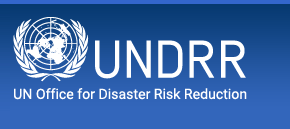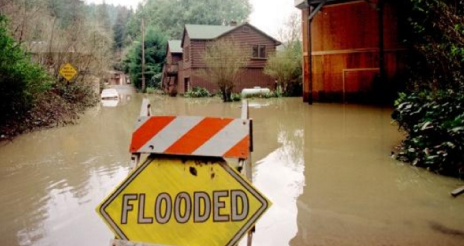- Our Mandate
- Mission and Objectives
- UNDRR in the UN
- Work Programme & Annual Reports
- Results Based System
- Work Partnerships
- Headquarters - Geneva
- SG-UN representatives for DRR
- Regional Office – The Americas and the Caribbean
- Head of the Regional Office – The Americas and the Caribbean
- What is Disaster Risk Reduction?
- What is the International Strategy?
- History of UNDRR
"El Niño": Devastation leads to an unforgettable Christmas
By: UNDRR
PANAMA, Panama, 29 December 2015- While in North America, cities such as New York and several others in the United States are witnessing the hottest Christmas on record and with extreme flooding and tornados resulting in more than 40 deaths in states such as New Mexico, Texas, Oklahoma, Missouri and Illinois; Mexico is experiencing unusual snowfalls whereas flooding is being faced in the United Kingdom as well as in South America where heavy rains and severe flooding have led to more than 170 thousand people being evacuated in Paraguay, Argentina, Brazil and Uruguay.
These occurrences, linked to the “worst global climatic fluctuations of the last 15 years” according to the World Meteorological Organization (WMO), are a consequence of the El Niño Southern Oscillation (ENSO), a recurrent climatic phenomenon resulting in fluctuations in oceanic temperatures in the central and eastern equatorial Pacific in periods of three to seven years. This directly affects the distribution of precipitation in tropical areas and can also have a strong influence on weather and climate patterns in other parts of the world.
In Paraguay alone and despite the National Emergency Secretariat having announced in November that based on the weather forecasts the tendency of El Niño was expected to be from strong to moderate in the coming months, with the rise in water levels of the Paraguay River an estimated 130,000 people have been evacuated and four persons lost their lives from falling trees in the capital city of Asuncion where a state of emergency has been declared along with 7 departments and with the national government designating $3.5 million USD for response measures.
According to official sources, the hardest hit region was the waterfront near Asuncion, where an estimated 90,000 people had to leave their homes and with forecasts predicting more rain in the coming days in this country of 6.8 million inhabitants. “The (Paraguay) river is close to reaching a height of eight meters. Not even the most alarming forecasts have indicated that we could reach these levels in December” stated Julián Báez, Director of the Bureau of Meteorology and Hydrology (DINAC for its Spanish acronym).
Two people have also been killed and 20,000 individuals evacuated in three provinces of Argentina. In Brazil, flooding of the Uruguay River has exceeded the expectations of authorities upon the impact on the state of Rio Grande do Sul, where more than 9,000 people were affected. In Uruguay more than 9,000 people have been displaced, according to reports from the National Emergency System (SINAE).
Significantly, according to experts of the Intergovernmental Panel on Climate Change (IPCC), occurrences of El Niño and La Niña are becoming more frequent and intense, further intensified due to climate change, since a warmer planet and hence increased energy intensify the hydrological cycle for these phenomena.
According to estimates by the WMO, the effects of the present El Niño are the most virulent since 1950 and could continue through the first months of 2016. In this regard, authorities in the United States are warning of more storms and tornadoes. At the same time, the President of Paraguay, Horacio Cartes, has referred to rising river levels expected by March 2016, stressing the need to find meaningful solutions. "So far, we have been responding piecemeal. Every flood surprises us anew. This has to stop" he said.
Why “El Niño”?
The name El Niño (referring to baby Jesus) was given by Peruvian fishermen to a warm current that appears along the coast of Peru and Ecuador every year around December, the month in which the Christian holiday of Christmas is celebrated. What we now call El Niño seemed to them a stronger manifestation of that same appearance and the term was modified to refer only to irregularly strong occurrences. It was not until the 1960s that it was noted that this was not a local phenomenon but in fact is associated with changes spanning the tropical Pacific and beyond. The warm phase of El Niño usually lasts about 8-10 months.
The entire ENSO cycle usually lasts between 3 to 7 years and often includes a cold phase (La Niña), which can be just as strong, as well as some years that are neither abnormally warm nor cold. Still, the cycle is not a regular oscillation such as the change of seasons but rather can be highly variable both in terms of its intensity as well as its duration.
According to the Famine Early Warning Systems Network (FEWS), the current El Niño event has led to one of the worst droughts in recent decades in large parts of Central America and Haiti and is likely to extend over the initial months of 2016.
Forecasts by the International Research Center on El Niño
According to the International Research Center on El Niño (CIIFEN for its Spanish acronym), the anomalies caused by El Niño could reach their maximum intensity between November of 2015 and January of 2016, with a possible peak and tapering off until around March of 2016. This is reflected in a lack of rain in Central America, the Caribbean, northeastern and central Brasil, Colombia and along the coast of Venezuela, as well as heavier rains along the coast of Ecuador, the northern Amazon of Peru, central Chile, Uruguay and southern Paraguay.
According to the Director of CIIFEN, Rodney Martinez, “El Niño demonstrates in slow motion the effects of climate change on our planet and provides us with a glimpse into the effectiveness of investing in climate change adaptation, putting to the test the national disaster risk management systems while demonstrating the advances that have been achieved and the problems still to be resolved”.
UN: Climate Change and Sustainable Development
In order to face the tendency of increased intensity and frequency of disasters in recent decades, the Sendai Framework for Disaster Risk Reduction 2015-2030 adopted by United Nations Member States in March of this year as the first agreed upon instrument for the post-2015 global agenda, recommends:
|
Of the seventeen Sustainable Development Objectives to end poverty, promote prosperity and well-being for all, protect the environment and address climate change approved by the United Nations General Assembly in September of this year, Objective 13 refers us to “take urgent action to combat climate change and its impacts”.
Related links:
International Research Centre on El Niño
Famine Early Warning Systems Network
Sendai Framework for Disaster Risk Reduction 2015-2030
Sustainable Development Objectives
National Emergency Secretariat - Paraguay
Follow the UNDRR news online:
 Now we have twitter account @UNDRR Américas y el Caribe
Now we have twitter account @UNDRR Américas y el Caribe
JOIN US!
Tweets por el @UNDRR Américas y el Caribe

 Photo: © FEMA
Photo: © FEMA